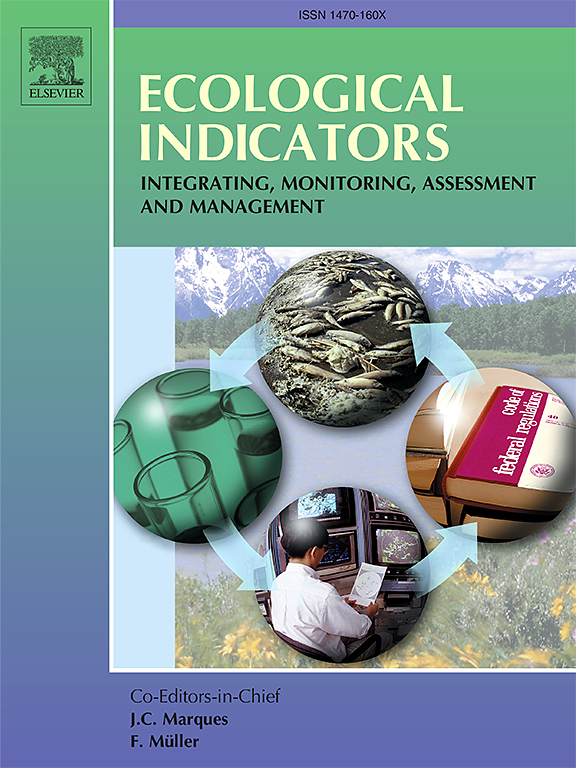Implications and measurement of inclusive green innovation: Empirical analysis of 277 prefecture-level cities in China
IF 7
2区 环境科学与生态学
Q1 ENVIRONMENTAL SCIENCES
引用次数: 0
Abstract
Inclusive green innovation (IGI) leverages innovation to harmonize economic, social, natural, and human systems to achieve sustainable green development. This study introduces IGI, outlines its connotations, and constructs an evaluation framework encompassing four dimensions: economy, society, ecology, and innovation. Using data obtained from 277 prefecture-level cities in China from 2011 to 2020, this study employs entropy-weighted TOPSIS, kernel density estimation (KDE), Gini coefficients, and Moran’s I to analyze spatial patterns and the evolutionary dynamics of IGI. The findings show that: (1) Green innovation is a key driver for sustainable development and can balance economic and environmental objectives while emphasizing social inclusivity, ensuring broad participation by disadvantaged groups and equitable sharing of the benefits of green innovation. (2) China’s IGI index has recently grown significantly, with Beijing, Shanghai, Guangzhou, and Shenzhen demonstrating strong growth performance. However, disparities between cities and across dimensions have widened. (3) Regional disparities in IGI initially decreased during the study period, but they have recently increased, with eastern regions showing the most pronounced intra-regional differences. The spatial clustering of IGI follows a reverse U-shaped growth trend, including strong clustering effects in major economic regions, such as Beijing–Tianjin–Hebei, the Yangtze River Delta, and the Pearl River Delta, as indicated by Local Moran’s I. Policymakers should prioritize IGI development focusing on the role of disadvantaged groups in green innovation. It is essential to strengthen technology, policies, environmental conditions, and social interactions for creating opportunities for participation and benefit-sharing, ultimately providing stronger support for sustainable green development.
包容性绿色创新的启示与测度——基于中国277个地级市的实证分析
包容性绿色创新(IGI)利用创新来协调经济、社会、自然和人类系统,实现可持续的绿色发展。本研究介绍了IGI,概述了其内涵,构建了包含经济、社会、生态和创新四个维度的评价框架。利用2011 - 2020年中国277个地级市的数据,采用熵加权TOPSIS、核密度估计(KDE)、基尼系数和Moran’s I分析了城市间IGI的空间格局和演化动态。研究结果表明:(1)绿色创新是可持续发展的关键驱动力,能够平衡经济和环境目标,同时强调社会包容性,确保弱势群体的广泛参与和绿色创新收益的公平分享。(2)中国IGI指数近期增长显著,其中北京、上海、广州和深圳的增长表现强劲。然而,城市之间和各维度之间的差距已经扩大。(3) IGI的区域差异在研究期间先减小后增大,其中东部地区区域内差异最为显著。Local Moran的研究表明,IGI的空间集聚呈现“倒u”型增长趋势,京津冀、长三角、珠三角等主要经济区域具有较强的集聚效应,政策制定者应重视弱势群体在绿色创新中的作用。要加强技术、政策、环境条件和社会互动,创造参与和利益分享的机会,最终为可持续绿色发展提供更有力的支持。
本文章由计算机程序翻译,如有差异,请以英文原文为准。
求助全文
约1分钟内获得全文
求助全文
来源期刊

Ecological Indicators
环境科学-环境科学
CiteScore
11.80
自引率
8.70%
发文量
1163
审稿时长
78 days
期刊介绍:
The ultimate aim of Ecological Indicators is to integrate the monitoring and assessment of ecological and environmental indicators with management practices. The journal provides a forum for the discussion of the applied scientific development and review of traditional indicator approaches as well as for theoretical, modelling and quantitative applications such as index development. Research into the following areas will be published.
• All aspects of ecological and environmental indicators and indices.
• New indicators, and new approaches and methods for indicator development, testing and use.
• Development and modelling of indices, e.g. application of indicator suites across multiple scales and resources.
• Analysis and research of resource, system- and scale-specific indicators.
• Methods for integration of social and other valuation metrics for the production of scientifically rigorous and politically-relevant assessments using indicator-based monitoring and assessment programs.
• How research indicators can be transformed into direct application for management purposes.
• Broader assessment objectives and methods, e.g. biodiversity, biological integrity, and sustainability, through the use of indicators.
• Resource-specific indicators such as landscape, agroecosystems, forests, wetlands, etc.
 求助内容:
求助内容: 应助结果提醒方式:
应助结果提醒方式:


